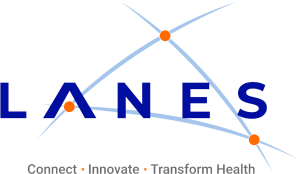The Data Exchange Framework (DxF) is a huge step towards ensuring that providers have access to the information that they need to deliver the best care to their patients. There are a lot of questions around the new framework and requirements around the first major deadline – signing the Data Sharing Agreement (DSA).
LANES recently hosted a webinar with the Center for Data Insights and Innovation’s (CDII) Deputy Director of the Data Exchange Framework, Deeanne McCallin. Here’s what we learned…
What is the DxF?
The Data Exchange Framework is California’s aggressive and much-needed statewide data sharing agreement that will accelerate and expand the exchange of health information among health care entities, government agencies, and social service programs beginning in 2024. The overarching goal is simple – to ensure that providers have the right information, at the right place, at the right time, while adhering to federal and state laws. It came to life In July 2021 when Assembly Bill 133 established the California DxF. The DxF is still being shaped, but there are currently six pages finalized so far in AB 133 and eight pages of finalized policies and procedures that cover launching the regulation.
There is a single Data Sharing Agreement that all entities named in AB 133 must sign
As of January 31, 2023, a list of certain healthcare entities were required to sign the DSA including:
- Acute psychiatric hospitals
- Clinical laboratories
- General acute care hospitals
- Health care services plans, disability insurers, managed care plans
- Physician organizations and medical groups
- Skilled Nursing Facilities that maintain electronic records
Government entities are called out specifically and encouraged (not required) to sign. It is the intent of the legislature that government entities will also join the DxF.
The two sides signing the DSA are the provider or health care organization, and CalDHS, signifying an agreement between these two entities. Every organization signs the same exact document in the signing portal. There are currently over 1,000 signatures representing over 1,400 entities and while the deadline has technically passed, the window is still open to sign the DSA and will remain open. There are no current penalties associated with not signing the DSA, but Governor Newson is considering a penalty for failure to execute the DSA in the May 2023 revision to the proposed budget. An “encouraged” organization would not be subject to penalties, but a “required” organization would be.
So, what happens after an organization signs the DSA? Nothing until January 31, 2024. For some organizations, such as physician practices with fewer than 25 physicians, nonprofit clinics with fewer than 10 health care providers, or specified hospitals, it will be January 31, 2026, before they need to do anything.
What’s Next?
In the coming months, CDII will introduce a Qualified Health Information Organization (QHIO) and a Technical Assistance (TA) grant program under the DxF to help fund the costs associated with implementation. Approved QHIO organizations will have demonstrated that they are poised and ready to help DSA participants be compliant with the DxF. The first two rounds of DSA Signatory grants will be reserved for organizations who are required to sign the DSA under AB 133. Voluntary organizations can come to the application pool in the third round. We expect to see a jump on DSA signings as grant opportunities go live.
The Wrap Up
The DxF is the first step towards an interconnected vision for health and human services. All procedures and policies have been developed through an open, public, and transparent process. A committee of stakeholders have participated in the building of this framework and have served as an advisory group throughout the development of the DxF and the DSA.
LANES is here to help
LANES can help healthcare entities achieve compliance. Our services are unique as not many data sharing entities are exchanging with social services. McCullin believes LANES is poised to be able to help folks comply with the DSA and the framework. We encourage you to contact us with any questions you may have regarding the DxF and compliance at . You can also visit our DxF Resource page for updated and additional information.
For more information, visit lanesla.org.
Data Exchange Framework – California Health and Human Services



